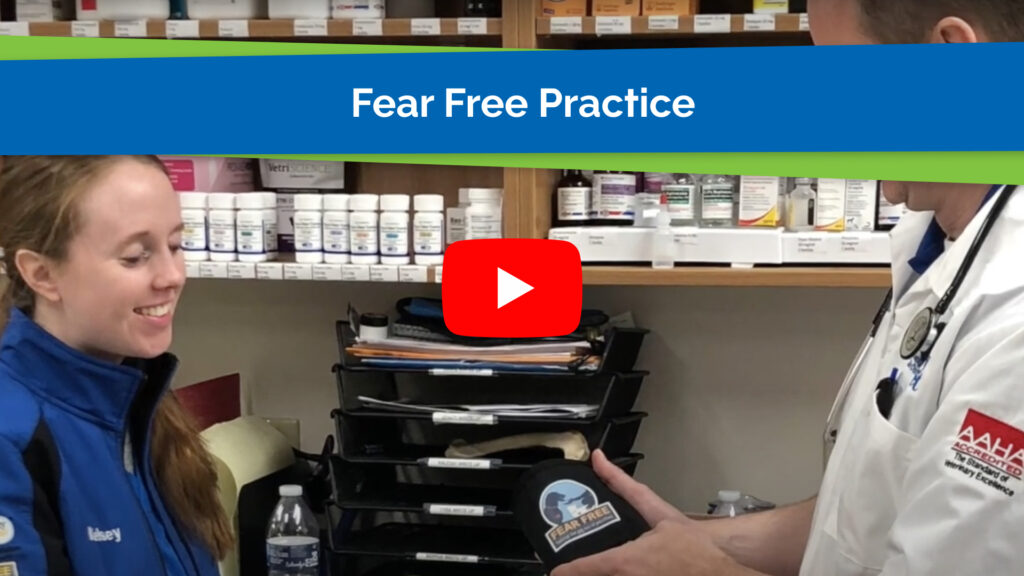The fear free program has been very successful at Danville Family Vet and is something we have been doing for a few years now. Some of the things that you might notice that we do differently are based on the fear free program. The point of being a fear free practice is to ensure that your pets aren’t afraid to go to the vet. It is a lofty goal but we are making significant progress towards being completely fear free.
Major points of emphasis are reducing fear, anxiety, and stress in pets when they visit. If we can’t be completely fear free, we can at least reduce the stress of your pet to make their appointment more enjoyable.
What Are Ways We Create a Fear Free Environment at Danville Family Vet?
Dr. Smith always keeps treats with him for your pet. Most times when Dr. Smith enters a room he will throw the dog a treat before greeting it and allow the dog to check him out. After this interaction, he will ignore the dog and go sit down. He does this because the dog is still trying to get to know him and if Dr. Smith made an advance toward the dog and/or went to pet it, the dog might feel threatened. What we really want to do is communicate to the dog in a way that they understand by letting them sniff around and check their environment before deciding if they want to play. Our first impression with your pet is very important to us.
What Does the Fear Free Program Teach?
One thing the program teaches is to identify warning signs that a pet might be experiencing fear, stress, or anxiety. We identify this by noticing if hair is standing up on their back, if their pupils are dilated, if their tail is tucked, or if their back is arched. All of these could be signs that your pet is feeling uncomfortable in their environment. There are many small indicators with your pets posture that you might not notice, but tip us off if your pet is feeling stressed.
In our exam rooms, dogs especially have routines that they go through if they are feeling stressed. They will hide in a certain corner of the room or go to certain places that allow us to identify that they are feeling stressed.
Cats are a little bit different, but still can try to hide if they feel uncomfortable or stressed. They will also show posture signs usually just by tensing up when they are in a different environment. Cats usually try to find an escape route from their stressful environment and will try to run away.
If you have a pet that might be stressed or anxious about going to the vet, give us a call because there are things you can do at home before you even step foot in the office. Some extreme cases, pets need medications just to be able to visit the vet. The medication allows your pet to relax so they can have a good experience with their appointment. If pets have a positive experience with a visit, even if they are under medication, the next visit will be even easier for them. This also helps with their socialization and allows them to go to other places and meet new people as well.

